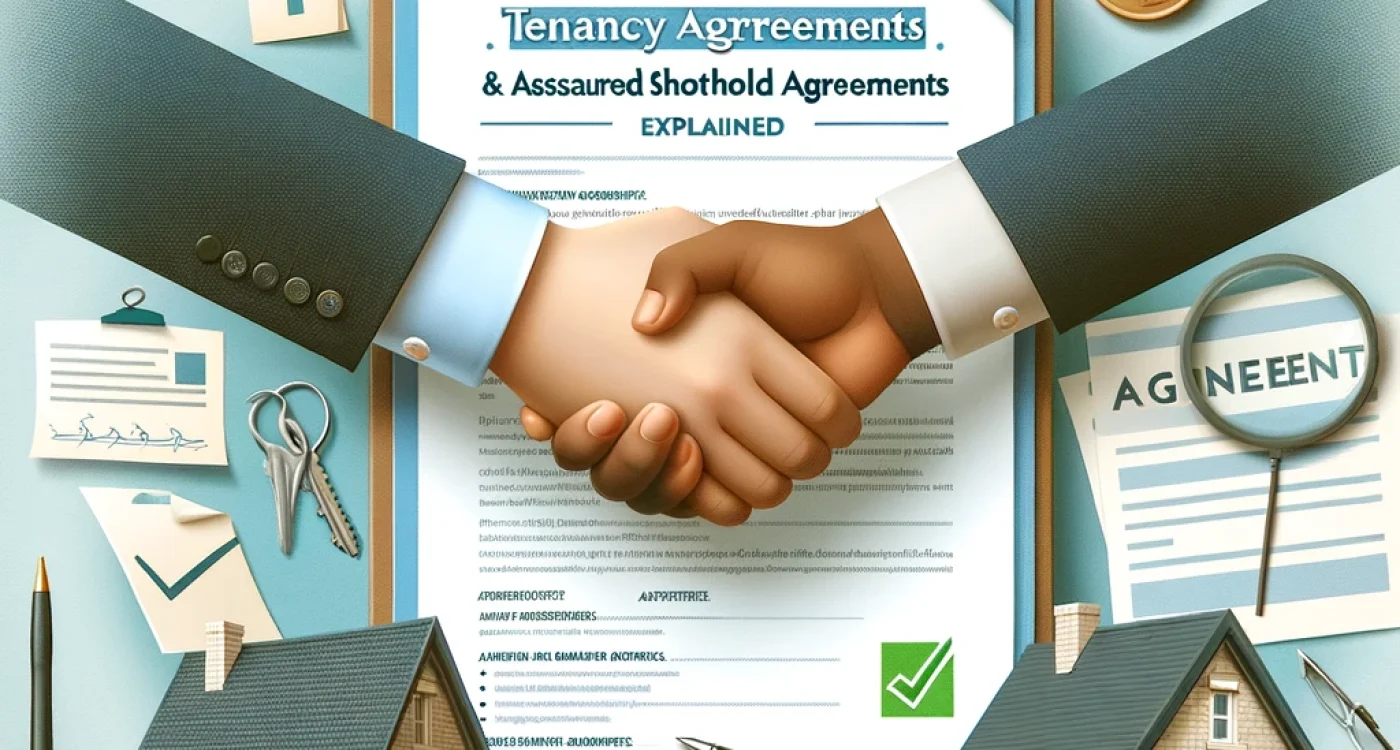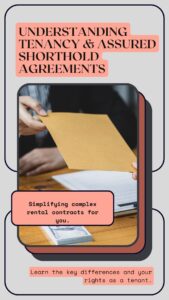
Explore Tenancy Agreements & Assured Shorthold Agreements (AST): Learn about the AST agreement model, download a free tenancy agreement form in PDF format, and understand renting a room in the UK.
Navigating the ever-evolving landscape of property management and real estate requires staying ahead with the latest tools and trends.
Lendlord’s innovative Tenancy Agreement Generator simplifies the process of creating tenancy agreements, making it an indispensable asset for landlords, property managers, and real estate professionals.
This tool offers a range of features that streamline and customize tenancy agreements to meet specific needs and local regulations.
With an easy-to-use interface, secure cloud storage, and collaborative capabilities, Lendlord’s Tenancy Agreement Generator revolutionizes the management of rental properties, ensuring efficiency, legal compliance, and enhanced communication.
Discover how this powerful tool can transform your property management approach today.

An Assured Shorthold Tenancy (AST) Agreement is a contract that outlines the terms of a residential tenancy, detailing the rights and responsibilities of both the landlord and the tenant.
Typically, an AST is a written agreement, although it can also be verbal, and it specifies key terms such as the start and end dates of the tenancy, the rent amount, and the obligations of both parties.
For instance, it outlines the tenant’s duty to maintain the property’s condition and the landlord’s responsibilities during the tenancy.

ASTs can be customized to suit various rental situations, whether for a fixed-term or a periodic tenancy, and are used for renting different types of properties like houses, flats, or rooms. In different regions, this agreement may be known as a short-term tenancy agreement, landlord tenancy agreement, or rental agreement.
Using an AST provides clarity, prevents disputes, and legally protects both landlords and tenants by ensuring that all parties understand and agree to the tenancy terms.
This agreement becomes legally binding once all parties have signed it. For changes or updates, a Lease Addendum can be used to amend the agreement without creating a new one.
Play Video about tenancy agreement assured shorthold webinar
How long can an Assured Shorthold Tenancy last?
An AST typically lasts between 6 months and 3 years. There is no maximum length for an AST, but tenancies longer than 3 years must be created as a Deed. After the fixed term ends, if no new agreement is signed, the tenancy automatically becomes a periodic tenancy, which can be terminated with appropriate notice from either party.
What are the key responsibilities of a tenant under an AST?
Tenants are responsible for paying rent on time, maintaining the property’s condition, and adhering to the terms outlined in the tenancy agreement. This includes not causing damage, informing the landlord of necessary repairs, and respecting the property and neighbors.
What are the landlord’s obligations under an AST?
Landlords must ensure the property is safe and habitable, conduct necessary repairs, and maintain the structure and exterior of the property. They must also ensure that gas, electricity, and water supplies are in good working order and comply with safety regulations.
How can a landlord end an Assured Shorthold Tenancy?
A landlord can end an AST by serving a Section 21 notice to regain possession without providing a reason, but this can only be done after the fixed term ends or if there is a break clause. Alternatively, a Section 8 notice can be served if the tenant breaches the tenancy terms, such as non-payment of rent.
Can a tenant terminate an AST early?
A tenant can terminate an AST early if there is a break clause in the agreement, or if the landlord agrees to end the tenancy early. Without a break clause, the tenant must negotiate an early termination with the landlord, potentially paying an early termination fee or finding a replacement tenant.
What happens if the tenant stays after the fixed term ends?
If a tenant stays in the property after the fixed term ends without signing a new agreement, the tenancy automatically becomes a statutory periodic tenancy. The tenancy continues on a rolling basis, with the same terms as the original AST, and can be ended by either party with appropriate notice.
What is a Section 21 notice?
A Section 21 notice is a legal document that a landlord can serve to regain possession of their property at the end of an AST. It requires the landlord to give at least two months’ notice and cannot be served during the first six months of the tenancy or if the tenancy is still within the fixed term without a break clause.
How is rent reviewed during an AST?
Rent can be reviewed during an AST according to the terms specified in the agreement. Typically, rent reviews occur at the end of the fixed term or annually for periodic tenancies. Any rent increase must comply with legal requirements and be fair and reasonable.
What should be included in an Assured Shorthold Tenancy agreement?
An AST should include the names and contact details of the landlord and tenant, property address, start and end dates of the tenancy, rent amount and payment terms, deposit details, and obligations of both parties. It should also specify terms related to repairs, maintenance, and any additional clauses relevant to the tenancy.
Powered By EmbedPress
1. Assured Shorthold Tenancy (AST)
Details:
The most common type of residential tenancy in the UK. Introduced by the Housing Act 1988, it provides landlords with the right to regain possession of their property at the end of the fixed term, provided they follow the correct legal procedures. ASTs usually have a fixed term of at least six months but can be longer. After the fixed term, the tenancy can become periodic, meaning it rolls on a week-by-week or month-by-month basis.
Source: GOV.UK (Gov UK)
2. Assured Tenancy
Details:
Tenants with a long-term tenancy have greater security than those with an AST. It allows tenants to stay in the property as long as they comply with the terms of the tenancy agreement. The landlord can only regain possession under certain conditions, such as rent arrears or other breaches of the tenancy agreement.
Source: Propertymark (PropertySector.org)

3. Periodic Tenancy
Details:
A periodic tenancy occurs when a tenant remains in the property after the fixed term of an AST has expired without signing a new fixed-term agreement. This type of tenancy can be either weekly or monthly, depending on how often the rent is paid.
Source: Shelter England (Shelter England)
4. Fixed-Term Tenancy
Details:
A tenancy of this kind has a specified start and end date, typically lasting six months to a year. The tenant agrees to stay in the property for the duration of the term, and the landlord cannot increase rent or terminate the tenancy without cause during this period.
Source: OpenRent (OpenRent) (OpenRent Landlord Hub)
5. Joint Tenancy
Details:
In a joint tenancy, all tenants sign a single tenancy agreement and are collectively responsible for the terms, including rent payment and property maintenance. If one tenant leaves, the others are still liable for the full rent.
Source: NRLA (NRLA – The Home For Landlords)
6. Individual Tenancy
Details:
This is common in house shares where tenants have separate agreements for their own rooms and shared access to communal areas. Each tenant is only responsible for their own rent and not the rent of other tenants.
Source: OpenRent Blog (OpenRent Landlord Hub) (OpenRent Landlord Hub)

7. Subletting Agreement
Details:
Occurs when a tenant rents out part or all of their rented property to another person. The original tenant becomes a sub-landlord and the new tenant a sub-tenant. Subletting often requires the landlord’s permission.
Source: Shelter England (Shelter England)
8. Commercial Tenancy Agreement
Details:
Used for renting out commercial properties like shops or offices. These agreements differ significantly from residential tenancies and usually offer less protection to tenants.
Source: GOV.UK (Gov UK)
These tenancies cover a wide range of rental situations in the UK, ensuring that both landlords and tenants have clear and legally binding agreements tailored to their specific needs.